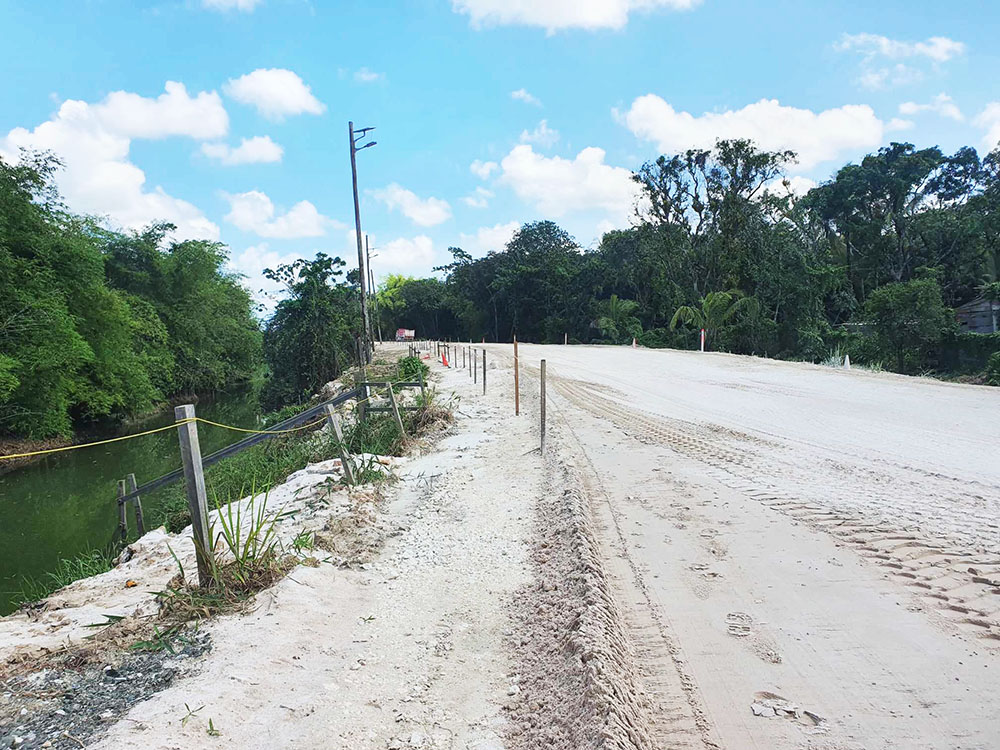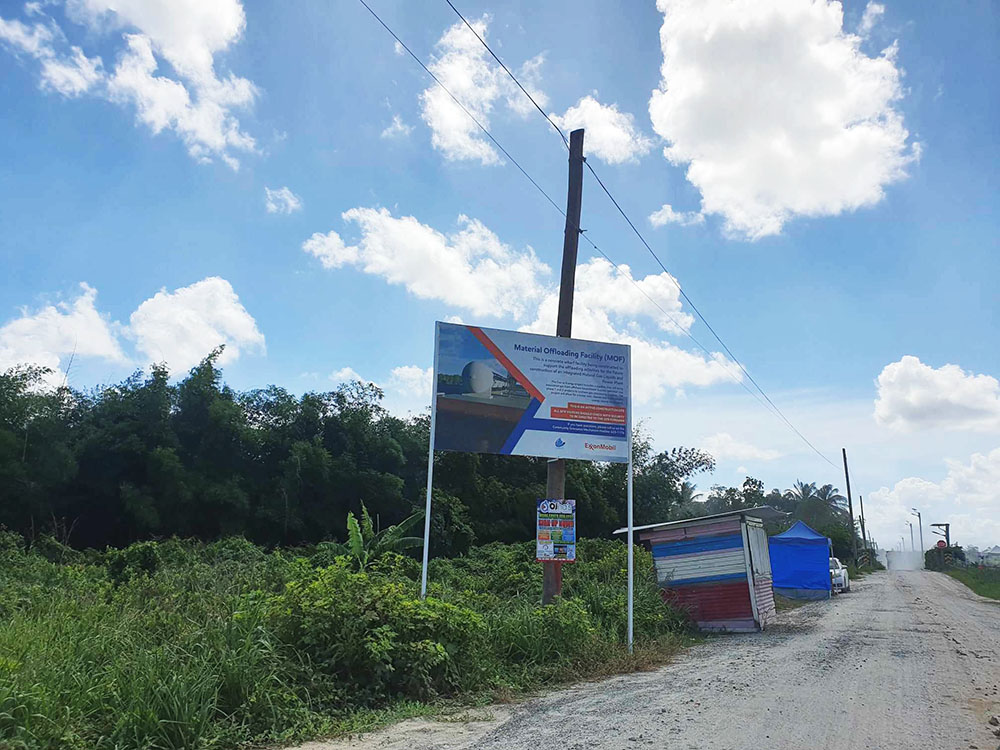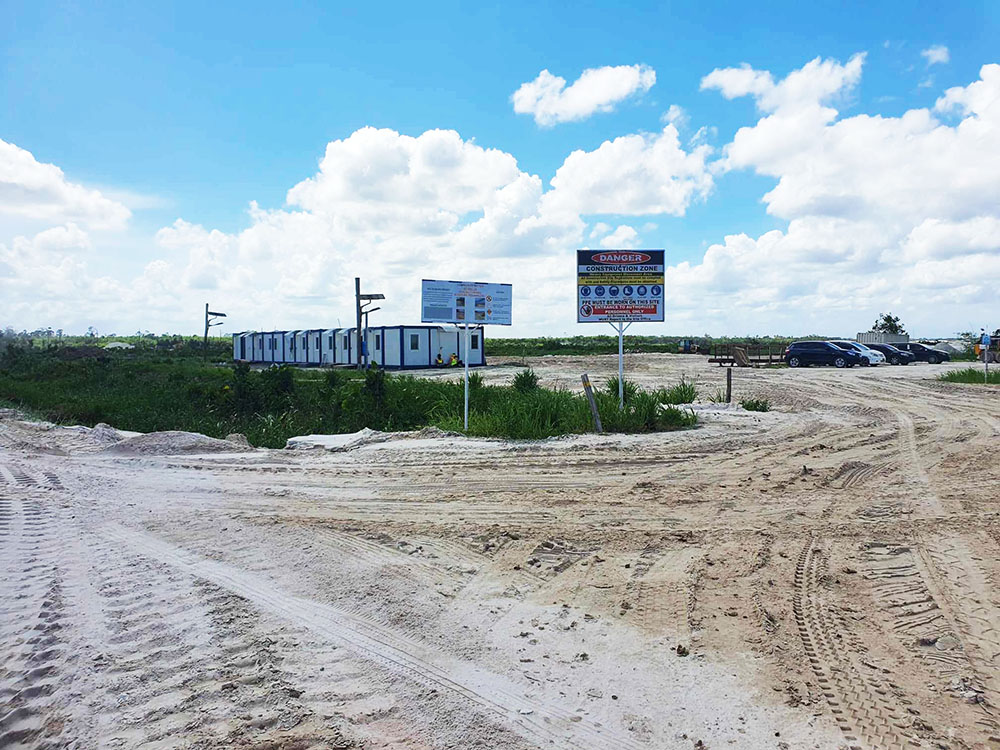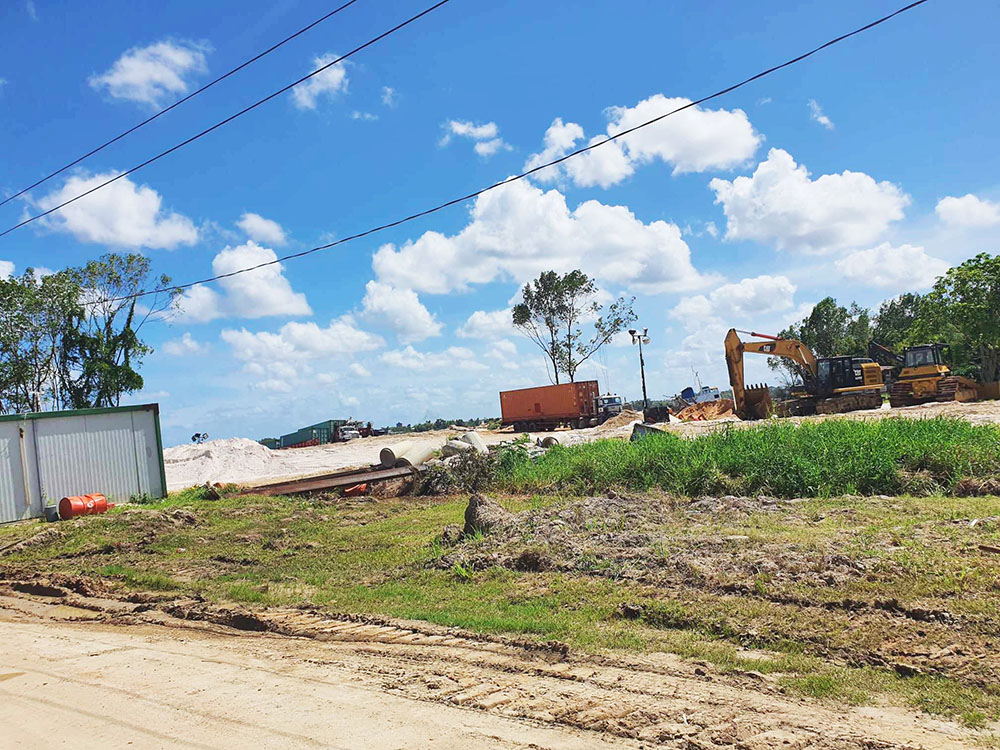Even as government awaits funding on the US$759m gas-to-energy (GTE) project, works are forging ahead at the West Bank Demerara site with pipe laying, constructing of internal roads and a materials offloading wharf, pile driving, as well as land preparation and other tasks.
And while sources state that only 5 per cent of the 200 kilometres of pipelines to be laid for the completion of the project has been done to date, work continues daily on that process, but “a lot of groundwork is happening.”
GTE project lead, Winston Brassington, told the Sunday Stabroek that approximately “443,000 m2 or 44.30 hectares” of land is being cleared onshore. Breaking down the works he said that at the integrated site plant (IPS), 403,930 m2 have been cleared; at the Materials Offloading Facility (MOF), 18,000 m2; at the Lay Down Area, 19,238.25 m2, and the Heavy Haul Road (HHR), 17,900 m2.
On Friday, the Sunday Stabroek visited the site which is about five miles from the former Wales sugar estate. The once desolate and bushy backdams have been cleared, with service roads constructed for transporting sand, stone and other materials to the main site. Large buses were parked at the site, and it was explained that they transport workers daily to and from work.
A wharf is being constructed on the bank of the Demerara River and persons are restricted from going to the site of works without clearance. Security guards informed that photos could not be taken or persons permitted on the property, as per the directions given by the project contractor.
“This is a concrete wharf facility being constructed to support the offloading activities for the future construction of an integrated natural gas liquids and power plant. The gas to energy project includes a pipeline that will bring associated gas from offshore ExxonMobil’s Guyana operated Liza Phase 1 and Phase 2 projects to onshore gas-processing facilities. The project will allow for a lower cost, cleaner and more reliable energy source for Guyana,” a sign at the entrance states.
“This is an Active construction site. All site visitors should check with security to be directed to the site foreman. If you have questions, please call us on the Community Grievance Mechanism Hotline 623-1176,” it adds.
At the area where the Heavy Haul Road is being constructed, a similar sign has been erected. “This Heavy Haul Road is a specifically engineered roadway that is designed to support the future construction of an integrated Natural Gas Liquids and Power Plant…,” along with the same restrictions as for the MOF.
As it relates to employees, Brassington gave a breakdown as to both foreign and locals. The numbers are reflected in the table below.
Table:
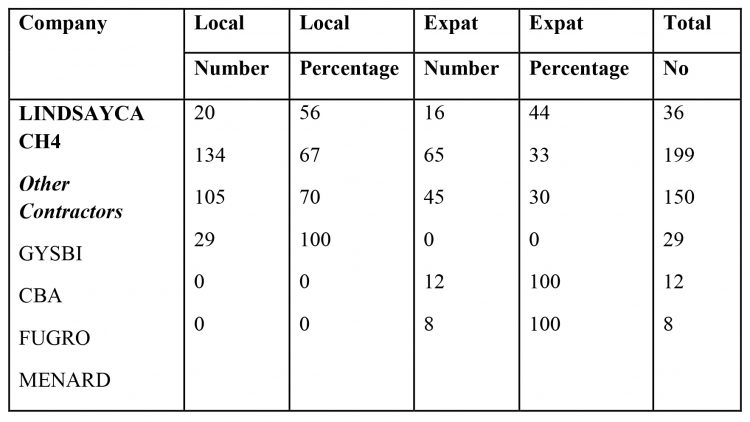 The PPP/C has repeatedly stated that the gas-to-shore project will help to bring down the cost of energy by 50 per cent. “It will help us to ensure we have the right base load for manufacturing and the industrial sector. More jobs, higher income, and greater prosperity for the people,” President Irfaan Ali has said of the project.
The PPP/C has repeatedly stated that the gas-to-shore project will help to bring down the cost of energy by 50 per cent. “It will help us to ensure we have the right base load for manufacturing and the industrial sector. More jobs, higher income, and greater prosperity for the people,” President Irfaan Ali has said of the project.
When he visited the site in October of last year, the President was told that that the first phase of the project should be completed by mid-2024.
It is not clear if that deadline still holds, but on Thursday, Vice President Bharrat Jagdeo acknowledged that the project has seen some delays with regards to a loan expected from the US EXIM Bank, but that works are forging ahead with monies being borrowed from this country’s coffers, until the loan sums are paid.
“It hasn’t been approved but we are paying for it from the Treasury. We are meeting all of our commitments to the contractor. We haven’t stalled the project or say ‘hold on the project until the loan is approved,’” Jagdeo said.
“I explained that the loan will be approved… it will be retroactive financing. And secondly, we have alternatives should this not be approved, but right now we had good engagements with [US]EXIM Bank and we expect it will be approved.”
The Vice President said that he could not say what percentage of the works had been completed but he knows that “the work is taking place in earnest, from our side and the contractor’s side and they are optimistic that the project will be done safely, credibly and come in within the reasonable timeline.”
Jagdeo said that on Wednesday he had had a meeting with the contractor of the gas to energy plant where he was updated about the ongoing works and informed that the fuel turbines had already been ordered.
“Just yesterday, I spoke with the people from Lindsayca, we had another meeting… I was asking them specifically about that. They told me about work… ensuring stabilization. The turbines that Stabroek News said we don’t have money for have been ordered and will arrive here by April of next year. It is ongoing.”
During the President’s site visit, the project phase manager had explained that every day some 500 cubic tonnes of sand are brought to the facility by barge and then taken to the worksite by trucks where it is used to consolidate the ground in preparation for the building of the foundation.
He went on to explain what comes next after that aspect of the project is completed “It depends on how the soil reacts; they have a good approximation but it is actually contingent on the actual conditions of the soil below. This first phase will be the first half of the year then there are further stages… the piling, then the building themselves….”
The project currently employs about 500 persons and Ali had urged contractors to maximise working during the current dry season. “You have to push a little more during this dry season because the weather is cooperating fully now.”
Explaining the project, Exxon pointed out that the GTE project will establish infrastructure so that natural gas can be transported from the Stabroek Block’s Liza oilfield to an integrated gas processing facility at Wales, West Bank Demerara. The project will deliver natural gas liquids (NGL) and dry gas to the Government of Guyana.
A subsea pipeline is expected to be installed on the seafloor to transport natural gas from the Liza field to an onshore pipeline on the West Coast of the Demerara River. Onshore, a pipeline will deliver the gas to the integrated facility at Wales. At this facility, a NGL processing plant will treat the gas to extract NGLs for commercial use, and a 300-megawatt (MW) power plant will use the dry gas to generate electricity for domestic use.
It is expected that the cost of electricity for consumers will be reduced by some 50 per cent. Currently, the power utility, Guyana Power and Light (GPL), provides electricity at a rate of 15 US cents per kilowatt hour.
ExxonMobil noted that the gas will be brought to Wales via export risers and an offshore pipeline and gave a brief explanation of how it would be done.
“The process of riser installation and pipe laying is highly automated using a state-of-the-art offshore installation vessel. The pipe is continuously lowered unto the seabed from the ship for its 200-kilometre route. For the last 50 kilometres the pipe will be buried. When the pipeline comes ashore, a horizontal directional drilling or HDD technique will be used to insert the pipe under the seawall. The same technique will be used for any road or major water crossings. The pipeline will be buried in a trench for its 27-kilometre journey inland.”
It added that the pipeline “maximizes a route that involves state-owned land and minimizes the impact to communities. The ground is first levelled and pipe sections are strung and welded together along the route. A trench is excavated along the welded pipe strips and pipe-laying machines lay the pipes into place. The trench is backfilled and the site is restored to its original condition. The pipelines onshore and onshore will not be visible to the public.”
The pipeline terminates within the Wales planning area which the government has also selected for a new industrial development. The natural gas plant will process the associated gases into multiple sources of energy and distribute those accordingly.
